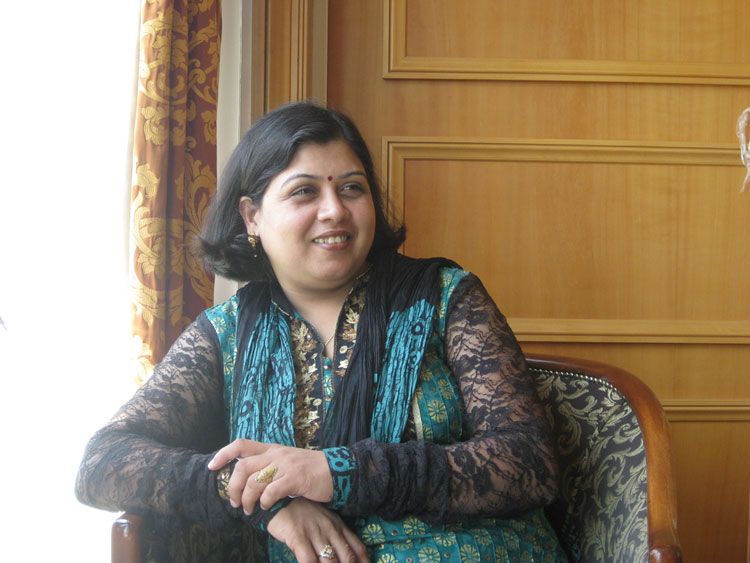Silicon Valley often hosts world leaders, but rarely gives them the rock-star reception that it is planning for India prime minister Narendra Modi. Seats for an 18,500-person event where he will be speaking, at the SAP Centerin San Jose, disappeared within days, and tens of thousands more could have sold. The Indian community is abuzz with more excitement than when Bollywood troupes visit. Companies such as Google, Facebook, and Tesla are rolling out the red carpet.
The euphoria arises partly because Indians here are still optimistic that Modi will transform India after decades of economic stagnation under socialist governments. But his greater appeal to the tech community is due to his being one of the worlds few truly tech-savvy leaders. He has mastered social media and has more than 15 million followers on Twitter second only to President Obama among world leaders. And Modi has declared his intent to build a Digital India: a knowledge economy that delivers key government services electronically; all parts of the country are all connected with high-speed Internet networks; and the populace is digitally literate.
Considering that India has already become the largest growth market for smartphones and will, by the end of this decade, add more than 500 million Internet users, it is not surprising that the CEOs of Microsoft, Google, Facebook, and Adobe are lining up to meet with Modi. They need to ensure that there be no regulatory roadblocks in India, which will have a market twice as large as the U.S. market. But my hope is that it goes beyond the star power and that Modi gets to see the can-do attitude of Silicon Valleys entrepreneurs. They are using exponentially advancing technologies such as sensors, artificial intelligence, robotics, medicine and 3D printing to change the world, and these technologies can also help transform India and uplift its population.
Here are some examples of what is possible for India and what Modi needs to support:
Smart cities: Modi has talked a lot about smart cities, but what he refers to are cleaner and more efficient cities not what we talk about in Silicon Valley. Using the advances in sensors, for example, it is possible to build technologically connected cities that monitor things such as traffic patterns, air quality, noise, radiation levels and water quality. These sensors canmanage pollution, waste, parking, traffic congestion, security, and almost every other aspect of a citys functioning. The cities wont cost billions of dollars, as the original smart cities did that Middle East countries tried to build, but millions of dollars. Indian entrepreneurs can start building smart neighborhoods and then scale these up to the city level.
Sharing economy: Uber showed Indian entrepreneurs that app-based ride-sharing was practical even in Indias chaotic cities. But Uber targeted elite, high-end customers and got many things wrong. The bigger opportunities are to share rides in three-wheelers, bicycle rickshaws, and buses. Technology can also facilitate hiring of workers in the informal economy laborers, technicians, maids, and painters and tractor-sharing on farms; jhuggi rentals; bike-sharing; and seed swaps. Indian entrepreneurs are trying to build their own versions of these technologies; but they will need the government to streamline cumbersome regulations.
Health apps, devices, and genomics: Medical devices as accurate as those that western hospitals use are now possible by connecting inexpensive sensors to smartphones and tablets. A few Indian start-ups have already created better and more practical technology than I have seen in Silicon Valley. Forus Health, for example, has developed a portable eye-screening device, called 3nethra, that can detect eye pathologies such as cataract, diabetic retinopathy, and cornea-related problems.
Health Cubed has built inexpensive powerful medical devices that are in use on 2.5 million people in north India to measure blood pressure, blood sugar, heart rate, blood hemoglobin, and urine protein and to diagnose diseases such as HIV AIDS, syphilis, dengue, and malaria. MapMyGenome analyzes genome data to provide insights into the genetic bases of various aspects of individuals health, including traits, lifestyle, drug responses, inherited conditions, and diseases. Combining these technologies with telemedicine will enable hundreds of millions of villagers in India to receive timely and affordable health care.
Education: No matter how hard it tries, Indias government will not be able to fix its public schools in time to educate the more than 100 million children in towns and villages that are without adequate educational facilities. The only solution lies in technology. The inexpensive smartphones that Indians are now buying can also be used for education: there are thousands of applications available today that can teach subjects such as history, geography, music, mathematics, and science. Indian entrepreneurs need to build versions of them in local languages and create adaptive educational technologies that tailor the learning path to the needs of the student. Government needs to revise its curriculum and work hand in hand with entrepreneurs to offer digital education as a backup to the failing schools.
Agriculture: Technology is opening up possibilities for dramatically transforming Indias highly inefficient farms. Sensors can be used to monitor soil humidity and optimize watering; aquaculture can be optimized with on-farm diagnostic technologies; dairy and farm production can be automated through CRM-like systems. These can be connected to the smartphones that the farmers already have, and can also provide them with education and support.
Turning children into innovators: Schoolchildren in Silicon Valley have the opportunity to play with 3D printers, robot-building kits, and sensor components. These printers and kits are not expensive. Providing every village with these will enable children to build robots that automate manufacturing, to design innovative new consumer products and to customize 3D designs for global consumers. Children candevelop sensor-based systems for diverse industries, smart-city technologies, and new home-monitoring and -automation systems. Yes, children in villages can now build these technologies and they will learn them faster than adults do.
My hope is that Modi will take back with him a grand vision of the future; an understanding of what has become possible. His challenge is to inspire Indian entrepreneurs to achieve to the same degree as their kin in Silicon Valleywho have risen to the top ranks of its technology companies and now start 16 percent of its new businesses.
Link to article on Washington Post’s website
| About Author | |

|
Vivek Wadhwa is Vice President of Innovation and Research at Singularity University; Fellow, Arthur & Toni Rembe Rock Center for Corporate Governance, Stanford University; Director of Research at the Center for Entrepreneurship and Research Commercialization at the Pratt School of Engineering, Duke University; and distinguished visiting scholar, Halle Institute of Global Learning, Emory University. He is author of ”The Immigrant Exodus: Why America Is Losing the Global Race to Capture Entrepreneurial Talent”–which was named by The Economist as a Book of the Year of 2012. Wadhwa oversees the academic programs at Singularity University, which educates a select group of leaders about the exponentially growing technologies that are soon going to change our world. These advances—in fields such as robotics, A.I., computing, synthetic biology, 3D printing, medicine, and nanomaterials—are making it possible for small teams to do what was once possible only for governments and large corporations to do: solve the grand challenges in education, water, food, shelter, health, and security. |
Website: http://wadhwa.com/2015/09/27/how-modis-visit-to-silicon-valley-can-spark-indias-tech-economy/
Disclaimer: Please use this channel at your own discretion. These articles are contributed by our users. We are not responsible or liable for any problems related to the utilization of information of these articles.














